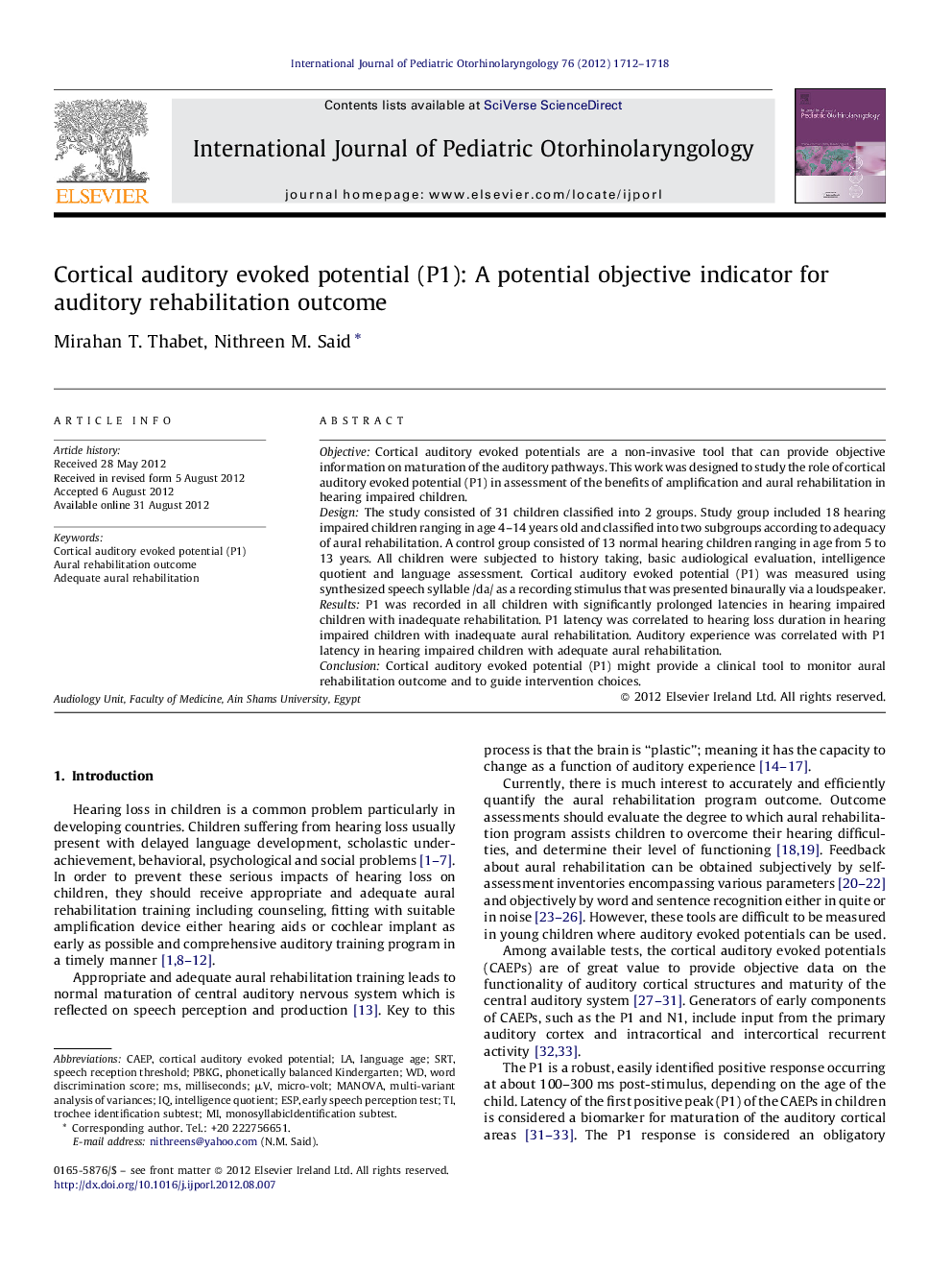| Article ID | Journal | Published Year | Pages | File Type |
|---|---|---|---|---|
| 4113256 | International Journal of Pediatric Otorhinolaryngology | 2012 | 7 Pages |
ObjectiveCortical auditory evoked potentials are a non-invasive tool that can provide objective information on maturation of the auditory pathways. This work was designed to study the role of cortical auditory evoked potential (P1) in assessment of the benefits of amplification and aural rehabilitation in hearing impaired children.DesignThe study consisted of 31 children classified into 2 groups. Study group included 18 hearing impaired children ranging in age 4–14 years old and classified into two subgroups according to adequacy of aural rehabilitation. A control group consisted of 13 normal hearing children ranging in age from 5 to 13 years. All children were subjected to history taking, basic audiological evaluation, intelligence quotient and language assessment. Cortical auditory evoked potential (P1) was measured using synthesized speech syllable /da/ as a recording stimulus that was presented binaurally via a loudspeaker.ResultsP1 was recorded in all children with significantly prolonged latencies in hearing impaired children with inadequate rehabilitation. P1 latency was correlated to hearing loss duration in hearing impaired children with inadequate aural rehabilitation. Auditory experience was correlated with P1 latency in hearing impaired children with adequate aural rehabilitation.ConclusionCortical auditory evoked potential (P1) might provide a clinical tool to monitor aural rehabilitation outcome and to guide intervention choices.
